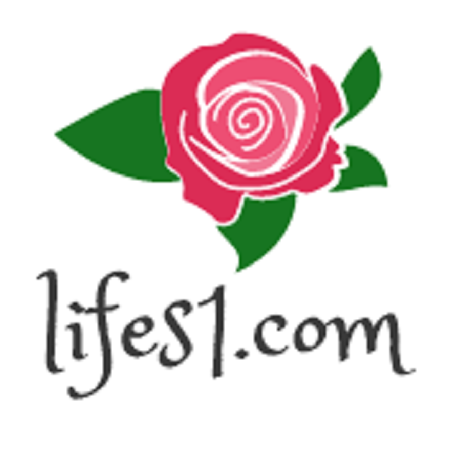In the era of renewable energy and increasing power demands, the role of efficient power converters has become indispensable. Among these, the 10KW three-phase inverter is a standout solution for businesses, farms, and commercial buildings that require stable, high-quality power.
By converting direct current (DC) into three-phase alternating current (AC), these inverters power complex machinery and systems with precision and reliability. Whether integrated with solar power setups or used in standalone systems, 10KW three-phase inverters are essential for managing medium-scale electrical loads efficiently.
What Exactly Is a 10KW Three-Phase Inverter?
A 10KW three-phase inverter is a device that takes DC input — usually from solar panels or batteries — and converts it into three-phase AC power capable of handling up to 10,000 watts of load. Unlike single-phase inverters that output power in a single waveform, three-phase inverters deliver three separate AC outputs offset by 120 degrees, which results in a more balanced and continuous power supply.
This makes the 10KW inverter ideal for industrial motors, pumps, HVAC systems, and other equipment that depend on smooth three-phase power.
Why Choose a Three-Phase Inverter for Your Power System?
1. Smooth and Stable Power Supply
The three-phase output ensures continuous power delivery with less pulsation, reducing mechanical stress and extending the life of motors and other equipment.
2. Greater Efficiency in Power Transmission
Three-phase power reduces current for the same power level, minimizing energy loss and improving overall system efficiency.
3. Supports Larger Loads
A 10KW capacity is sufficient for medium-sized industrial and commercial applications, providing a balance between power and affordability.
4. Compatible with Renewable Energy
When paired with solar panels and batteries, three-phase inverters help maximize energy utilization and storage.
Typical Applications of a 10KW Three-Phase Inverter
-
Industrial Machinery: Runs CNC machines, compressors, conveyor belts, and other high-power equipment.
-
Agricultural Systems: Powers irrigation pumps, greenhouse fans, and processing machinery.
-
Commercial Buildings: Supports HVAC, lighting, and office equipment in medium-sized facilities.
-
Solar Power Installations: Converts DC from solar arrays for use on-site or for grid export.
-
Backup Power Systems: Provides reliable electricity during outages when combined with battery banks.
Important Features to Look for in a 10KW Three-Phase Inverter
1. Input Voltage Compatibility
Check if the inverter supports your battery bank voltage or solar array voltage — typically 48V, 72V, or 96V DC.
2. High Conversion Efficiency
Look for efficiencies above 95% to ensure minimal energy loss during DC-to-AC conversion.
3. Integrated MPPT Solar Charge Controller
This feature optimizes solar panel output by constantly adjusting to the maximum power point.
4. Protection and Safety Mechanisms
Over-voltage, short circuit, over-temperature, and anti-islanding protection safeguard both the inverter and connected equipment.
5. Remote Monitoring Capability
Wi-Fi or Ethernet connectivity allows you to track system performance and diagnose faults remotely.
How to Design a System with a 10KW Three-Phase Inverter
Step 1: Assess Your Power Requirements
Calculate total load wattage, surge currents, and duty cycles of all equipment to ensure the inverter’s capacity fits your needs.
Step 2: Choose Compatible Solar Panels and Batteries
For a solar system, around 10-12KW of panels will match the inverter capacity. Battery size depends on backup duration requirements.
Step 3: Plan Wiring and Safety Components
Three-phase wiring requires careful balancing and adherence to electrical codes. Include fuses, circuit breakers, and grounding systems.
Step 4: Professional Installation
Engage a licensed electrician or renewable energy expert for safe and code-compliant installation.
Maintenance Tips for Longevity
-
Keep ventilation areas clear to prevent overheating.
-
Regularly check electrical connections for corrosion or loosening.
-
Update firmware if applicable to enhance performance and security.
-
Schedule periodic inspections for protective devices.
Common Challenges and How to Overcome Them
-
Initial Cost: Although a 10KW three-phase inverter can be expensive upfront, its long-term energy savings and durability justify the investment.
-
Complex Setup: Working with three-phase systems demands specialized knowledge. Hiring certified professionals is crucial.
-
Grid Interconnection: If feeding power back to the grid, ensure compliance with local regulations and utility policies.
-
Battery Compatibility: Choose battery chemistry and size carefully to prevent premature degradation.
Case Example: Medium-Scale Solar-Powered Workshop
A woodworking shop equipped with a 10KW three-phase inverter combined with a 12KW solar array and a 48V lithium battery bank saw the following benefits:
-
Solar power supplied 70% of daily energy needs.
-
Reduced grid dependency cut electricity bills by 55%.
-
Smooth operation of multiple three-phase machines without voltage dips.
-
Reliable power supply during outages, maintaining continuous workflow.
Conclusion: The Smart Choice for Balanced Power Needs
A 10KW Three-Phase Inverter is a powerful solution for businesses and operations requiring stable, efficient, and scalable energy conversion. Its ability to deliver smooth three-phase power makes it ideal for industrial, commercial, and renewable energy applications.
By investing in a quality inverter and designing a well-balanced system, users can enjoy improved energy efficiency, reduced costs, and enhanced reliability—making it a cornerstone of modern power infrastructure.

